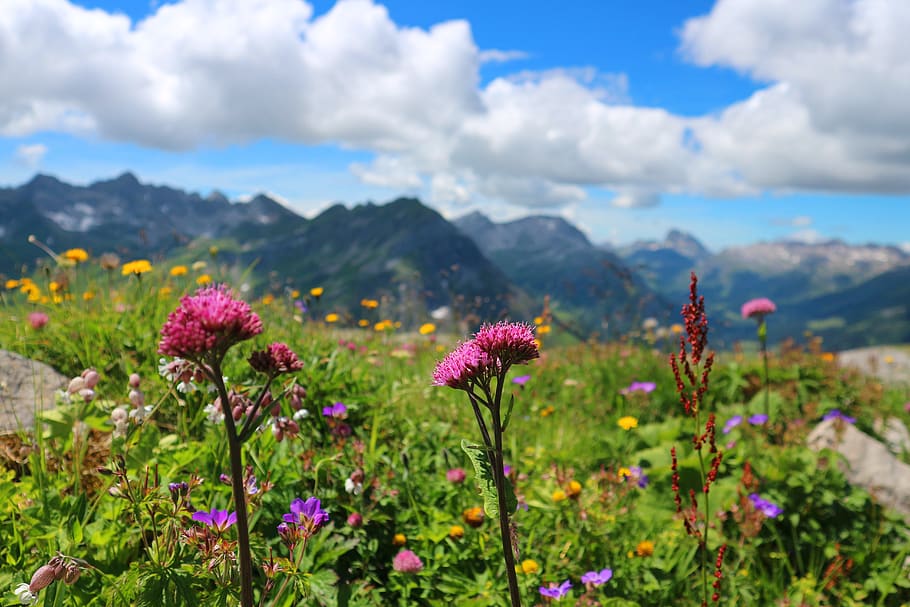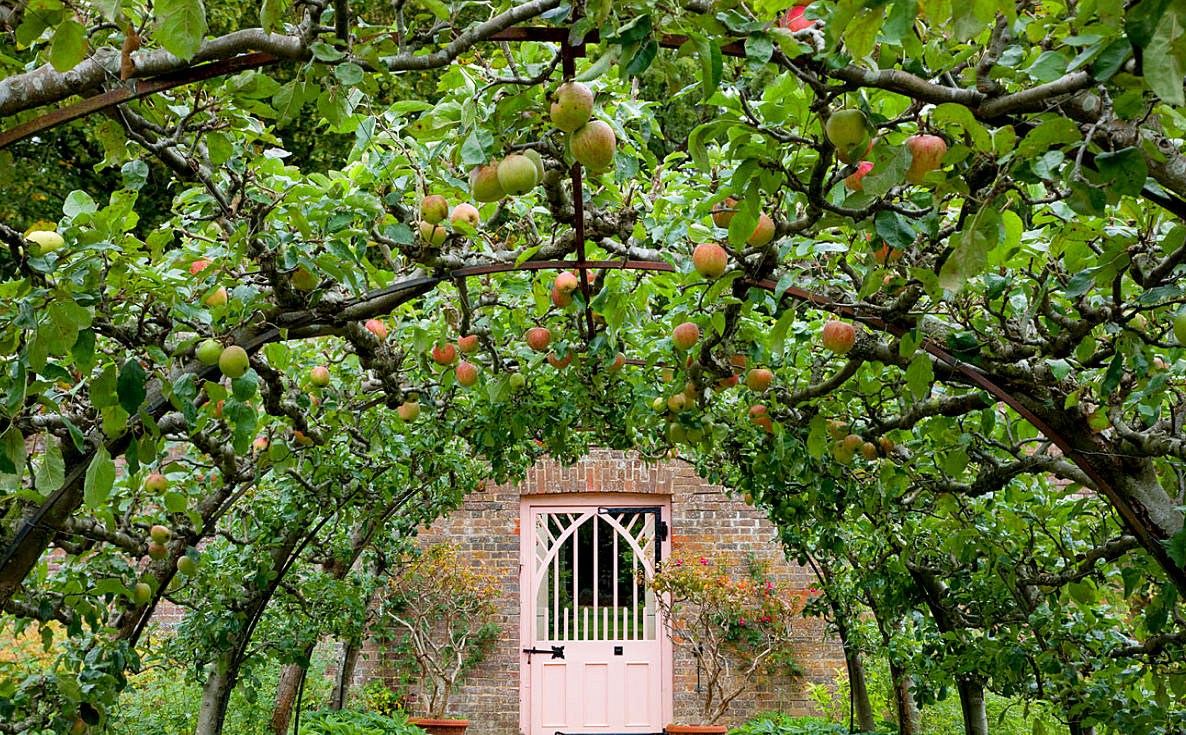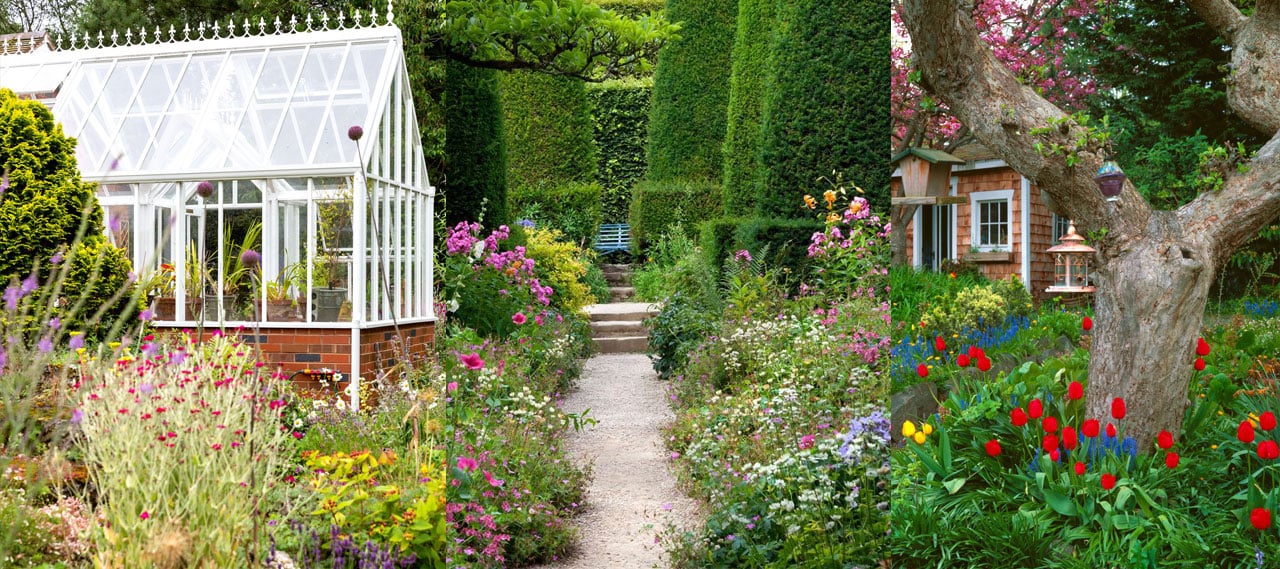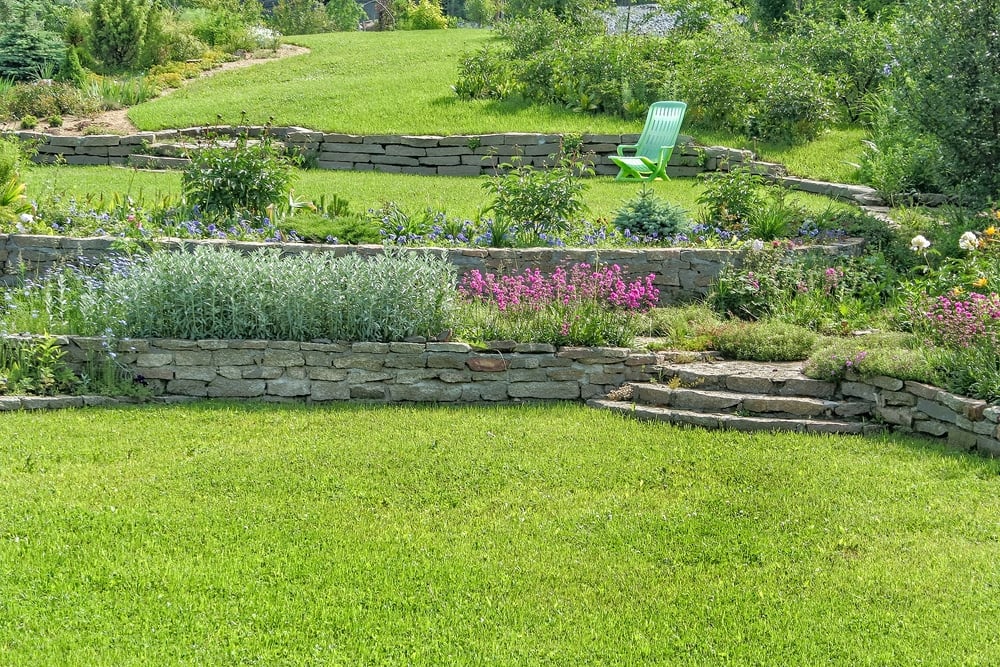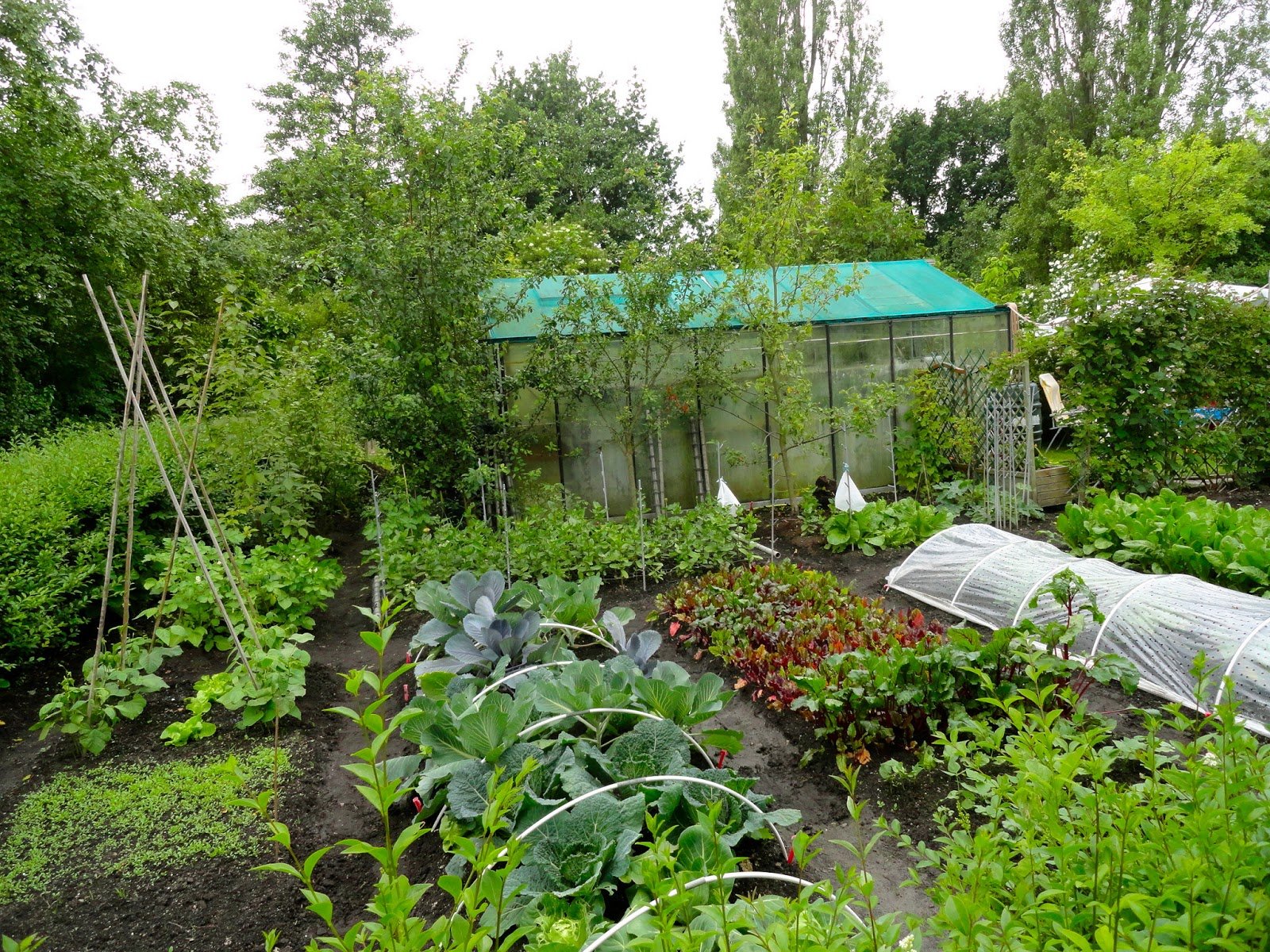20 Fast-Growing Hedge Varieties For Stylish Landscaping [UK]
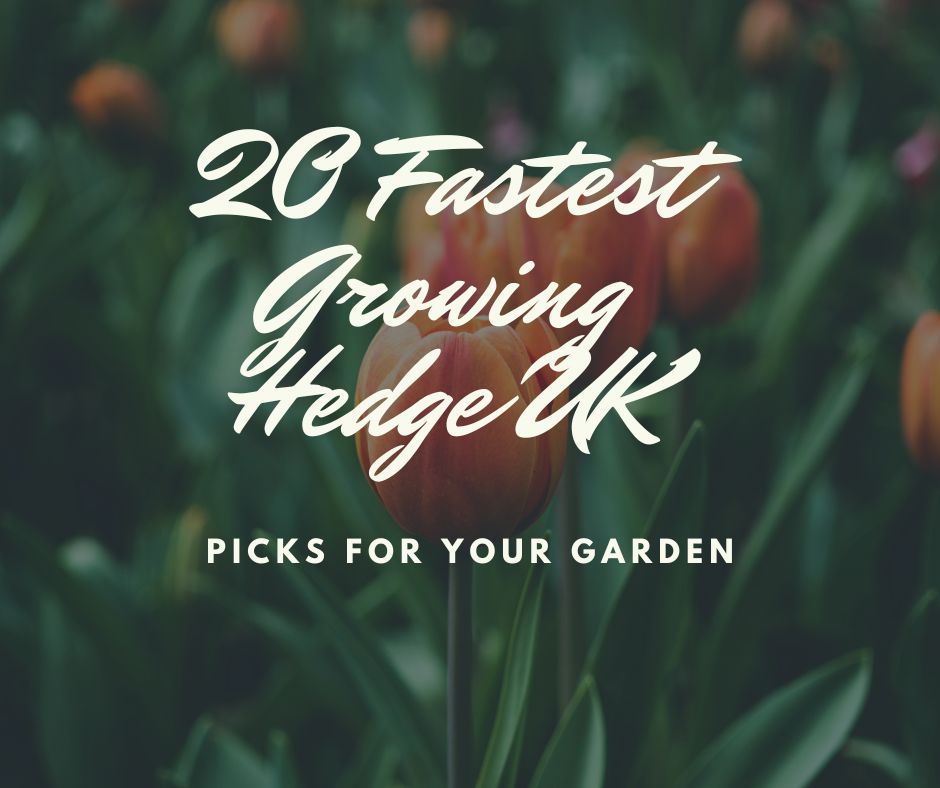
Table of Contents
Whenever you design your garden, one of the most important things to take into consideration is how you are going to create a border to define your specific area for it. Instead of using a wood, brick, or wire fence, we suggest you go natural by selecting the fastest-growing hedge of plants.
It will surely enhance the look of your landscape. The traditional hedge can be made from shrub plants, which are the fastest-growing. They are neatly trimmed and grown close together to create borders and block the inside view of your garden or walkway. They are considered ground covers. Hedges are one of the essential elements in the design of your garden.
There are many shrub plant options available to you for creating hedges. In this article, we are going to explore the 20 fastest-growing hedges for the UK to take into consideration.
Rapidly Growing Hedge to Increase the Charm of Your Yard
Here we will expand our knowledge about the 20 fastest-growing hedges for the UK. Shrub plants with rapid growth are selected as hedges to maintain privacy and create a border surrounding their area.
1. Leylandii Hedge
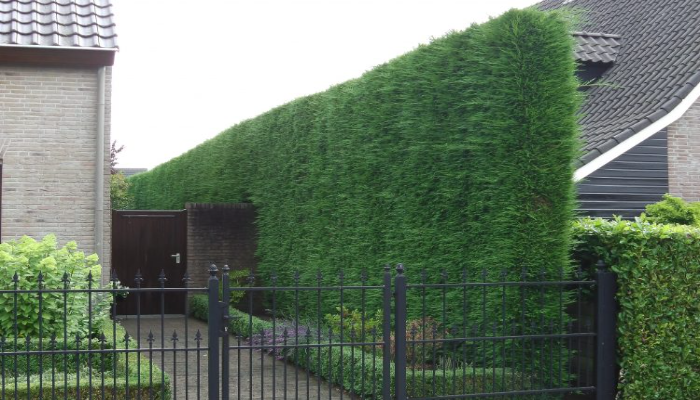
Leylandii has many qualities that make it an ideal hedge option in the UK. This plant can tolerate difficult soil conditions, like chalky soils and coastal areas. Its foliage is dense and can be trimmed to any size. It has a natural columnlike form and gives an elegant look to your space. Due to its lush foliage, it improves the privacy of the location and reduces noise and wind pollution.
Leylandii hedges do not let pollution enter the building easily and protect it for the year. In addition, it provides shelter for wildlife. Leylandii is an evergreen plant that demands very low maintenance. However, you must trim it regularly, as it becomes difficult to do so after the plant reaches a certain height.
2. Western Red Cedar Hedge
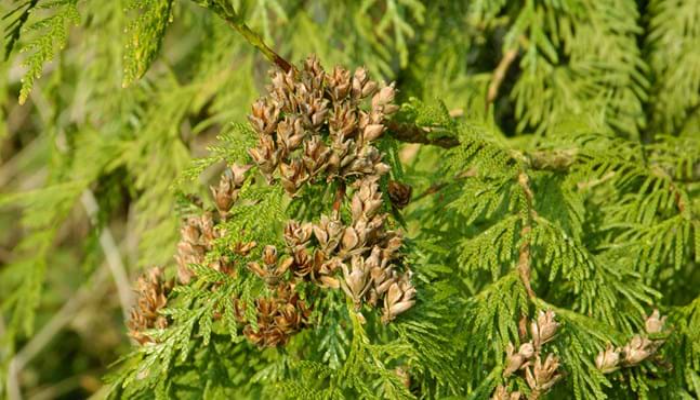
Thuja placate Atrovirens’ is another name for Western red cedar and is considered the best alternative to the Leylandii hedge. The foliage of Western Red Cedar is a glossier, vibrant mid-to-dark green. The leaves of this plant emit an aromatic fragrance when crushed. This is an evergreen plant that protects from noise and wind pollution annually.
Western red cedar is suitable for chalky and coastal conditions. This plant can grow in full sun or shade. The maintenance of this plant is low. You need to trim it once a year. This plant provides the best background for the other small plants and lets them bloom completely in their surroundings.
3. Garden Privet Hedge
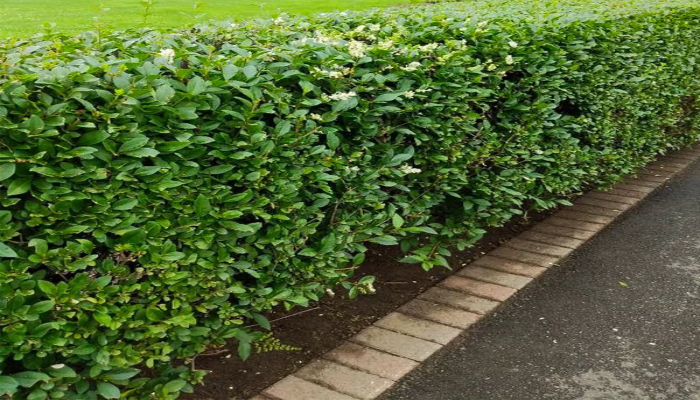
The binomial name for garden privet is Ligustrum ovalifolium. This plant has multiple names, like Korean Privet, Oval-Leaved Privet, and California Privet. This is the fastest-growing and most dense shrub plant. It is an evergreen plant, but in areas with warm winters, it is considered semi-evergreen. This plant has green and fleshy leaves on top, but it becomes yellowish-green inside.
This plant needs regular trimming during the growing season. A regularly trimmed plant does not produce any fruits or flowers. Garden Privet produces white flowers with a less likely aroma during the midsummer season. The fruits are poisonous for humans but can be eaten by many birds. This plant has received an award of garden merit from the Royal Horticulture Society in the UK.
4. Cherry Laurel Hedge
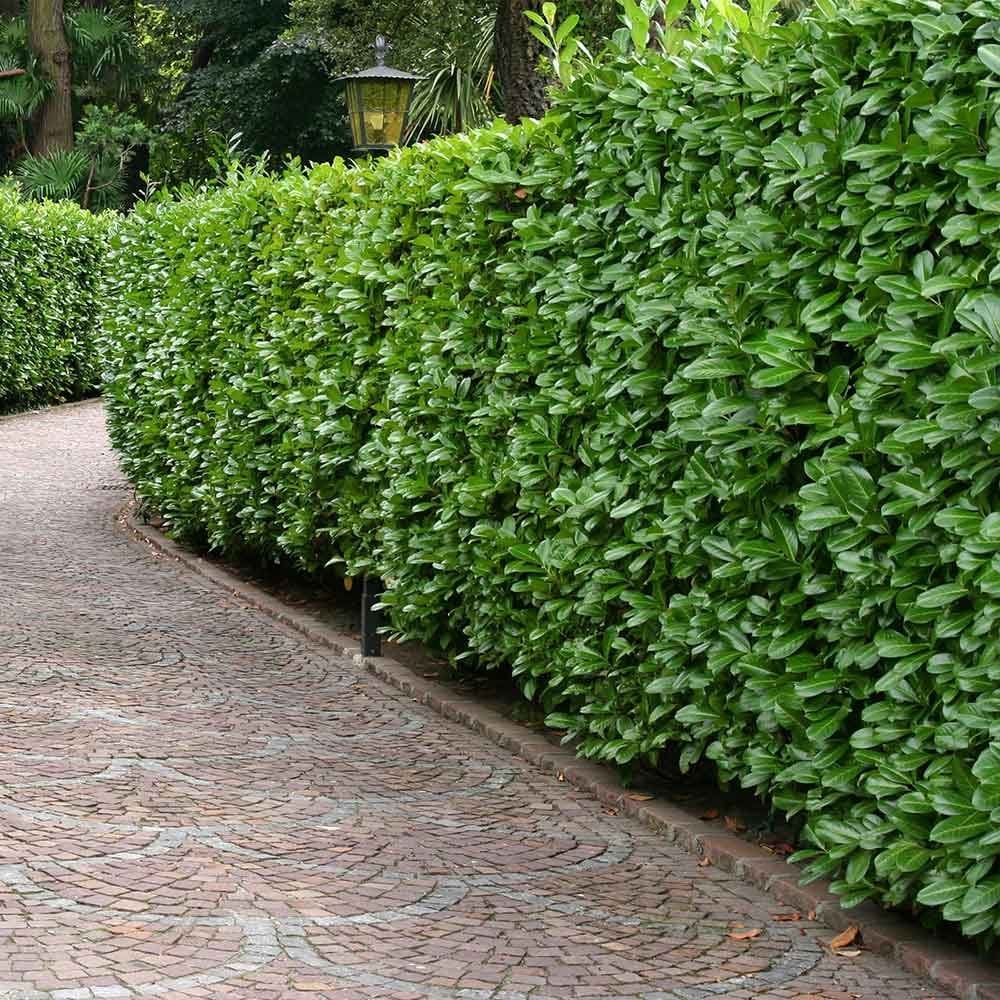
Cherry laurel is known as Prunus Laurocerasus’ Rotundifolia’ in Latin. This evergreen plant adds charm to your garden. Cherry laurel has dense, glossy, and vibrant foliage. The plant is adjustable in normal as well as clay soil. This plant has the characteristic of rapid growth. During the spring season, Cherry Laurel has fragile white flowers, whereas, in the winter, the plant bears red cherries.
The presence of cherry laurel plants as hedges reduce noise and wind pollution inside the garden and building. In the Laurel family, the leaves and fruits are harmful to humans, except for the Bay Laurel plant. This plant is easily maintained until it reaches a lower height. It is a very resilient plant, able to grow in most conditions.
5. Umbrella Bamboo Hedge
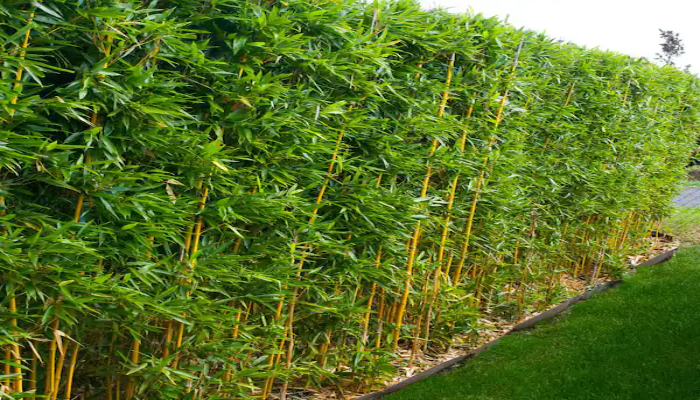
Umbrella bamboo is also called Fargesia murieliae.” This plant is different from other bamboo species in that it is covered with leaves from top to toe. In the beginning, the stem of this plant is blueish green, which eventually turns yellowish green while reaching a mature age. Full sunlight can dry the plant, so after keeping it in sunlight, try to keep it in the shade for some time.
There are two types of plants under this hedge. One is the Simba bamboo plant, which grows to 2 metres, while the ‘Jumbo’ bamboo plant grows to 3.5 metres. Umbrella bamboo is easy to maintain. It is adjustable to any soil type, but the only condition is that the soil must be slightly moist. This plant is sustainable at any temperature from -25 degrees to 40 degrees.
6. Blackthorn Hedge
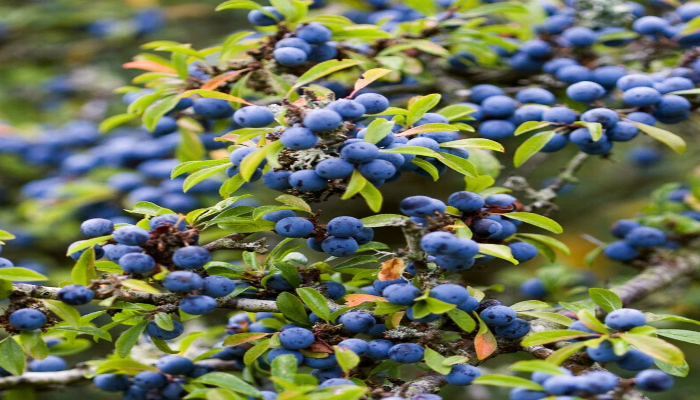
The scientific name for blackthorn is ‘Prunus spinosa.” Early in the spring, blackthorn blooms with white flowers before its leaves appear on the plant. Through the summer, the plant has dense foliage of green and oval-shaped leaves. The plant produces small fruits called soles in the autumn. It requires low maintenance.
It is one of the preferred hedging plants because it has thorns. It has such a thick density that even birds can build their nests. It is a rapidly growing plant. Other than flooded soil, it can grow in any soil. A sunny position is suitable for the best growth of the plant. Instead of trimming this plant in a freezing winter, it is advisable to do so in a warm winter.
7. Common Hawthorn
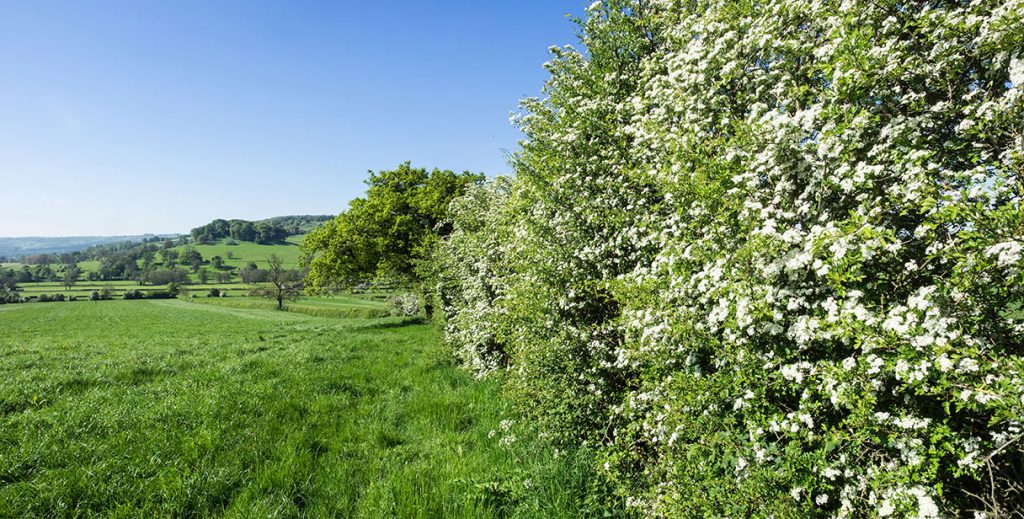
Common hawthorn has the scientific name Crataegus monogyna. It is also popularly known as Quickthorn, May Tree, Thornapple, Whitethorn, Hawberry, Mayflower, and many more. The dense foliage of the plant makes it the second-most suitable shelter for wildlife in the UK. Common hawthorn grows in any type of soil and is one of the fastest-growing plants. The plant can grow in full sunlight or partial shade.
The plant has a number of white flowers and green leaves in the spring. In the autumn months, the plant has red berries known as haws. The sharp thorns of the plants protect the garden. After flowering or in the autumn, plants need to be trimmed.
8. Dog Rose Hedge
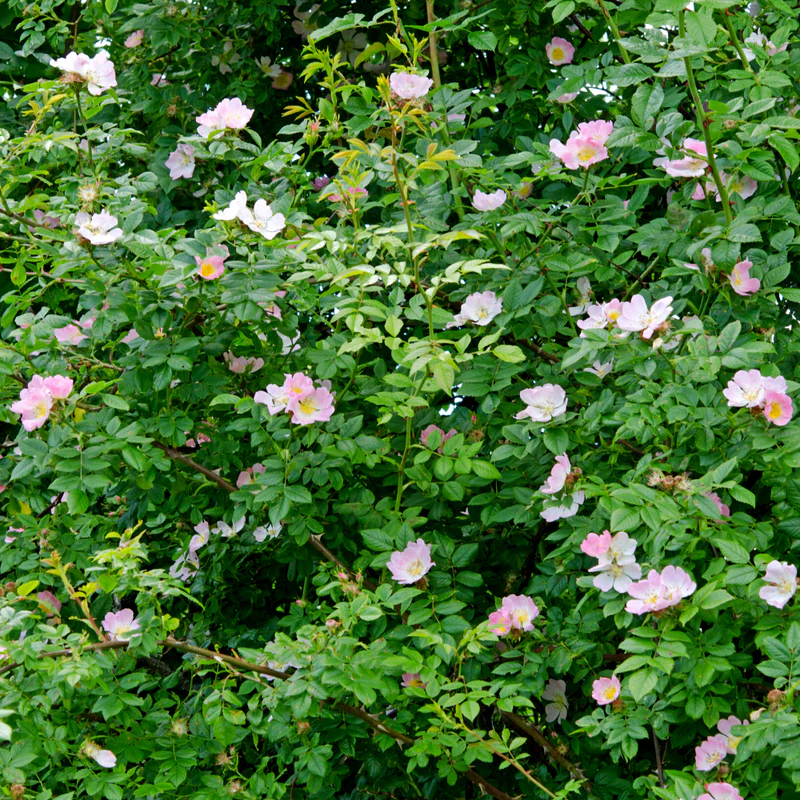
Dog Rose, one of the fastest-growing shrubs, is also included in the hedge list. The botanical name of this plant is Rosa canina. The plant is called wild rose or wild briar.” They are considered the best hedge plant due to their thorns, which provide the best security to their surroundings—the plant blooms with white and pink flowers during summer.
In the autumn, plants give off vitamin-C-rich fruits called red rose hips, edible for humans. A well-drained and moist soil is the best condition for the growth of the dog rose plant. The plant is capable of surviving extreme weather conditions. The plant is very low-maintenance and requires full to partial sunlight for growth.
9. Common Alder
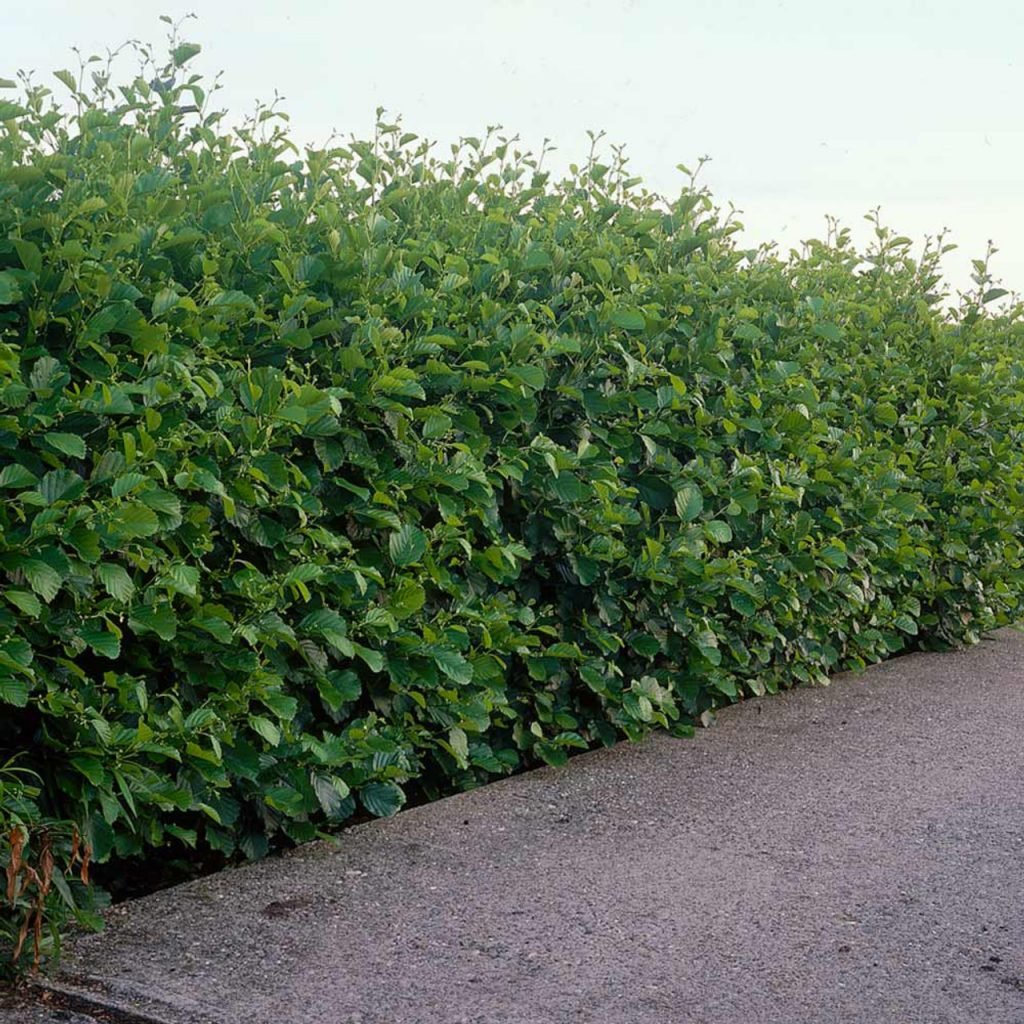
The scientific name for this plant is Alnus glutinosa. This plant differs from others due to its adaptability to wet or poor soil conditions. In spring, plants bear long catkins; in autumn, plants bloom with woody cones. As the plant has dense, bushy foliage, it shelters more than 90 species of small birds.
The unique quality of adopting poor soil makes it more sustainable for coastal or waterside areas. Common alder becomes a good cover for other delicate and small plants because of its capacity to sustain extreme weather conditions. This plant converts the nitrogen from the air into soil nitrate and uses it as fertiliser for itself and surrounding plants.
10. Common Hornbeam
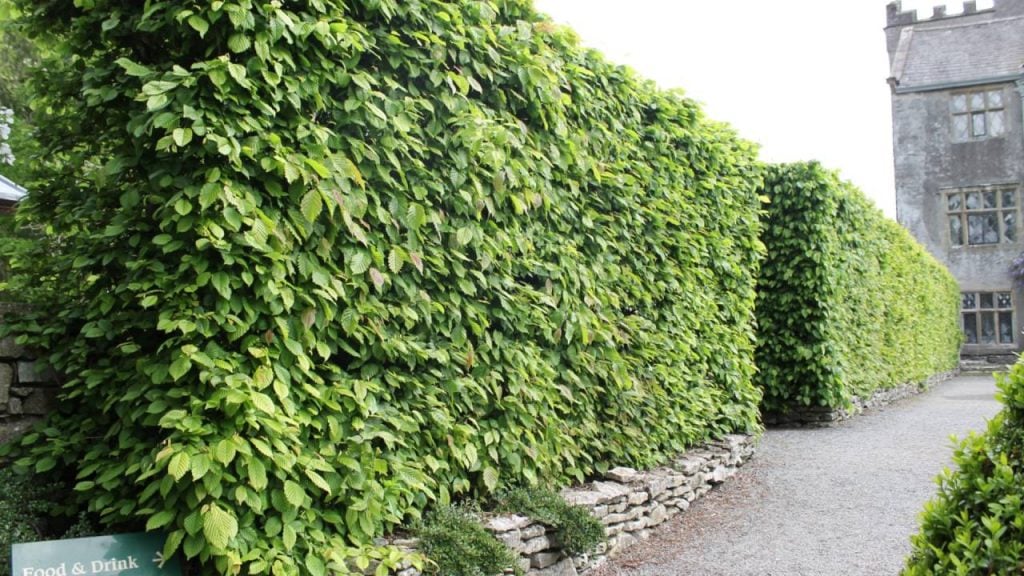
The Latin name of the common hornbeam is Carpinus betulus, and it acquires other names like European hornbeam. The dense leaf arrangement provides privacy and security to your landscape. The plant also protects your location from wind and noise pollution. In winter, plants bloom with green leaves, which turn into catkins from late spring until autumn.
The fruits of this plant are edible for wildlife. Common hornbeam can sustain extreme weather conditions like wet soil, high winds, etc. It can be useful as a single hedge plant or combined with other plants for hedging. The plant is easy to maintain. Only annual trimming in the summer season is required.
11. Christmas Berry’ red Robin’ Hedge
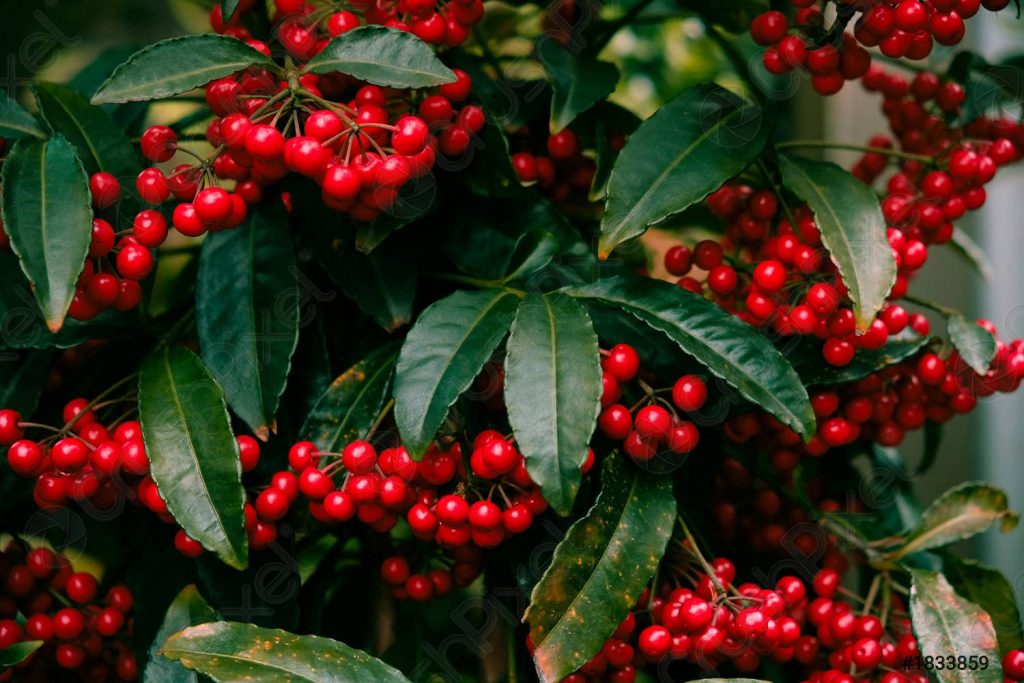
The Christmas berry plant is known as Photinia x Fraseri. The other name for this plant is Red Tip Photinia. This plant grows into a medium-sized tree. This is an evergreen plant. This plant has oval-shaped, dark green leaves that are red at a young age and more often in spring.
The plant can grow in any soil type, in full sun or partial shade. The Christmas Berry Red Robin plant is low-maintenance. It provides security and privacy for your yard. During the spring, the plant blooms with clusters of white flowers and gives an attractive look to your space. Regular trimming is required for the maintenance of the plant.
12. White Cedar ‘smaragd’
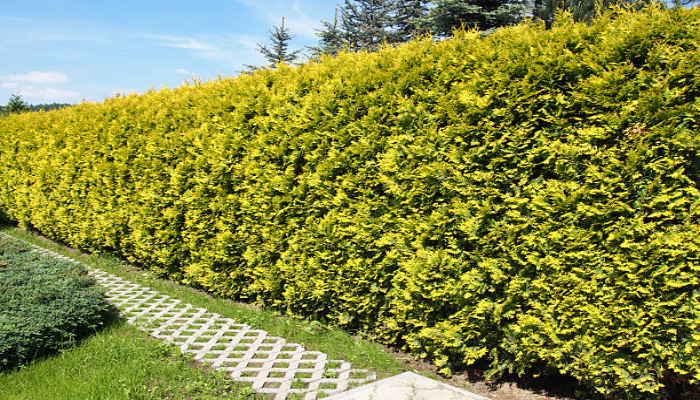
The white cedar plant is known as ‘Thuja Occidentalis’. This plant is an evergreen shrub that ensures the privacy of its surroundings. The white cedar is easily manageable compared to other plants. The leaves of this plant have a beautiful aroma.
White cedar can be grown well in well-drained soil. This plant requires full to partial sun for growth, and regular pruning is also needed. This plant is the best option for hedging and screening your yard. White cedar has a comparatively longer life than other plants.
13. Berberis Stenophylla Hedge
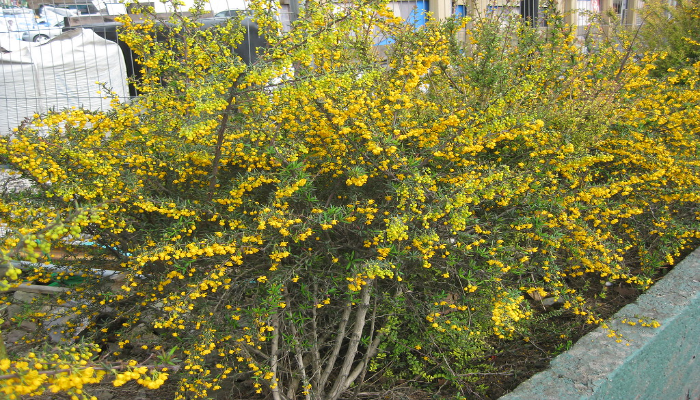
Berberis stenophylla is a fast-growing, evergreen shrub plant with dense foliage to provide enough security. The plant has clusters of yellow flowers that turn into blue fruits later in spring. The fruits are edible for humans by nature, having an extremely sour taste. It can grow well in any well-drained soil, which makes it suitable for clay and chalk soils.
The plant has dense foliage and thorns, which provide enough protection for the location. It is advisable to trim this plant after flowering. The planting of this hedge can be done from eighteen to twenty-four inches away.
14. Forsythia Spectabilis Hedge
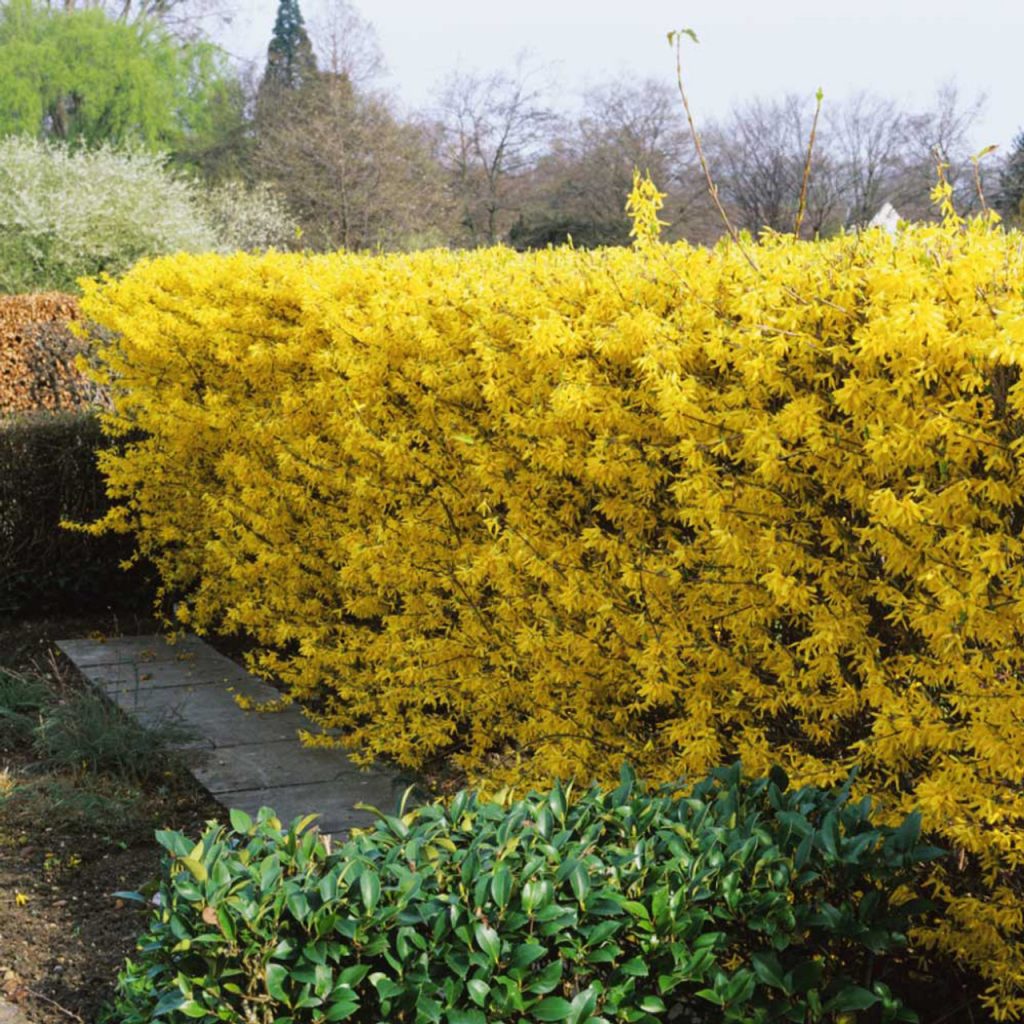
Forsythia is a deciduous shrub plant. From early March, the branches of the whole plant are covered with bright yellow leaves, which give an eye-catching look to your landscape. It is an easily grown plant. It requires minimum maintenance. Annual trimming should be done to keep it in the required shape and size.
The Forsythia Spectabilis plant fails to provide privacy compared to other plants. However, this is a good shrub plant to mix with other shrub plants for a hedge. This plant will give you a completely different look from other hedging plants. It can be grown in drained soil but can sustain in poor soil, also. This plan works well in full- to partial-sun positions.
15. Field Maple Hedge
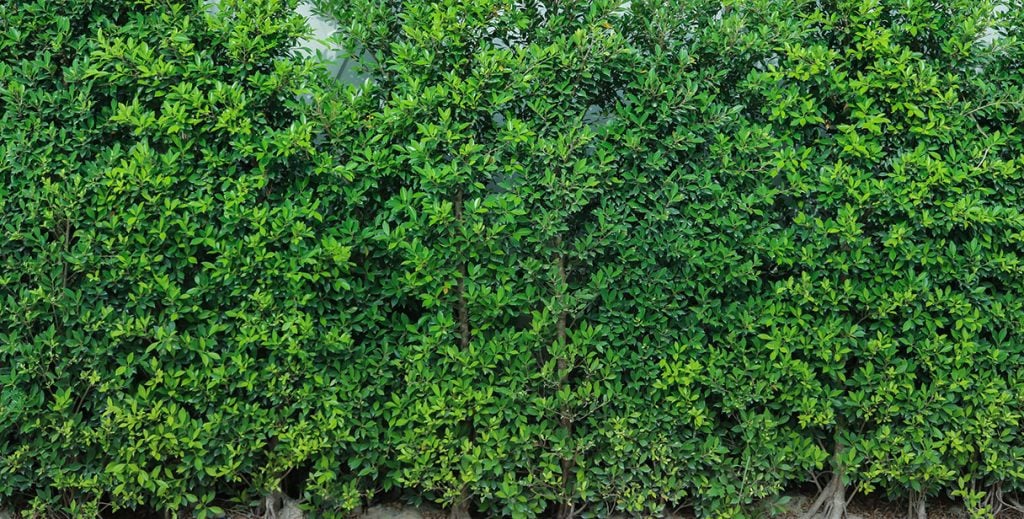
The other name used for the field maple hedge is Acer campestre. The native country of this plant is the UK. This is the fastest-growing plant used individually or mixed with other plants for hedging. The leaves of this plant are green with golden hues during the autumn, while they bloom with yellow-shaded flowers in the spring.
The field maple hedge is easily manageable. The bright green leaves turn yellow during winter, giving them an attractive look. This plant is wildlife-friendly, and many small lives depend on it. This plant produces maple syrup from its sap, and the wood is used for carving and turning.
16. Pyracantha Orange Hedge
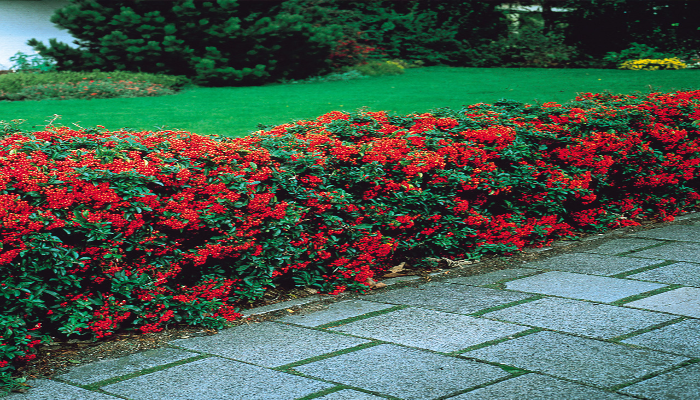
Pyracantha Mohave gives an attractive look while providing proper security due to its thorn. The plant boasts white flowers in spring while bearing bright orange berries in autumn. The native range of this plant is from Southeast Asia to Southwest Europe, where it is widely known as firethorn.
Many small wildlife creatures depend on this plant for survival. This is the most preferable plant for those who demand high privacy in their area. The plant should be trimmed every winter for maintenance. Moist soil and partial sun are recommended for the proper growth of this plant.
17. Berberis Ottawensis Superba Hedge
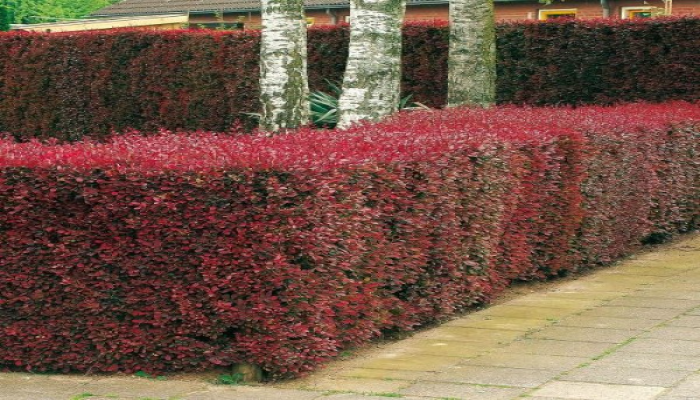
Berberis Ottawensis Superba can grow in any soil. A sandy soil condition is also preferable for this type of plant. Through spring and summer, plants bloom with red leaves. In autumn, just before winter, it gives off a fiery look. During the winter, plants shade all their leaves. The plant grows orange berries in the spring. This plant is considered an ideal one for hedging.
The yellow flowers on bright purple branch leaves create a mesmerising look in the yard. This plant does not demand extreme maintenance. Except for poor drainage soil, this plant can bare any conditioned soil. This plant has dense foliage and thorns for protection.
18. Elder Hedge
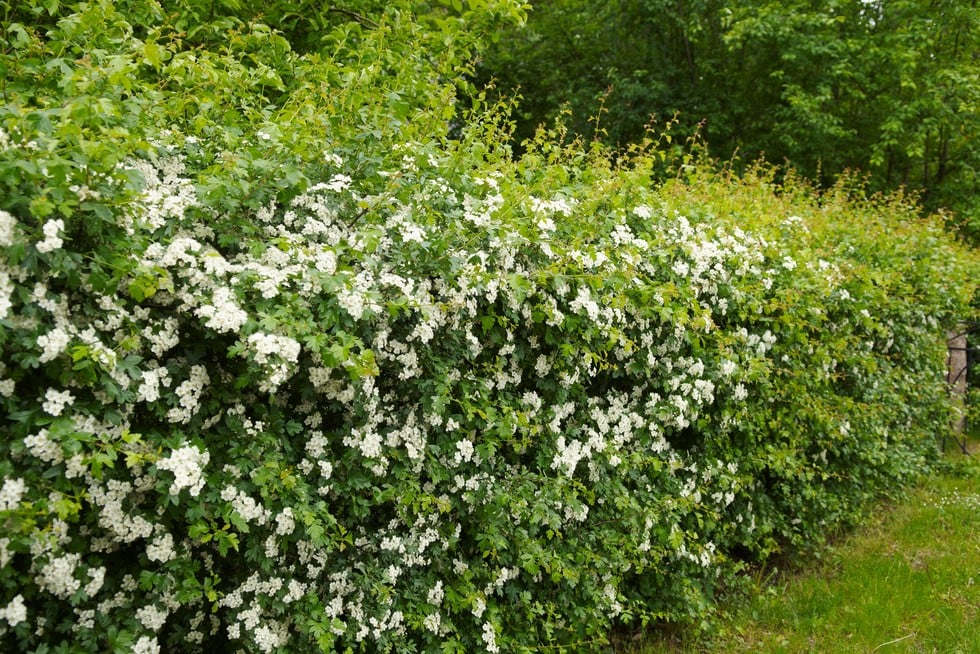
The elder plant has other names like Sambus nigra and elderberry. This plant is mixed with other hedging plants or grown as a single hedge. During June and July, elder plants boast large white flowers; later plants have elderberries with a high amount of vitamins. The plant blooms with leaves in January and faces the fall in November.
The plant has a musky aroma, which helps protect the yard from rabbits. The leaves and stems are harmful, but the fruits and flowers are edible. This UK-native plant can stand up to the extreme weather of a coastal site. The flower of this plant has a variety of uses, like making tea and wine, and some medicinal uses whose effectiveness is yet to be proven.
19. Hazel Hedge
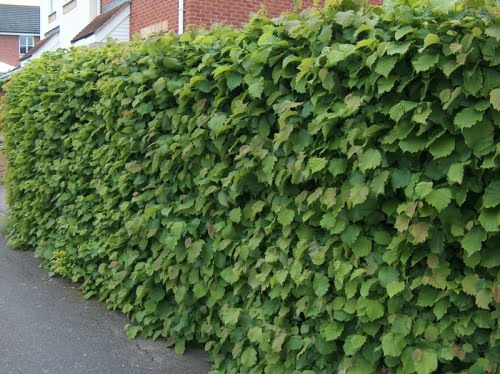
The hazel plant has yellow catkins, also known as lamb’s tails. They make an appearance from January to March. It is very important to take care while trimming to have edible nuts from the plants. The nuts are completely mature by October or September and have protection from the squirrels. This very lawful maintenance plant requires trimming once a year.
The green leaves turn orange during autumn. This plant stands out from other plants due to its texture, shape, and colour features. This is the fastest-growing plant, sustaining any weather condition. More than 70 insect species depend on this plant for their survival. The existence of this tree has been noted in mythology and ancient stories. The nuts of this plant are considered lucky to carry.
20. Snowberry Mother of Pearl Hedge
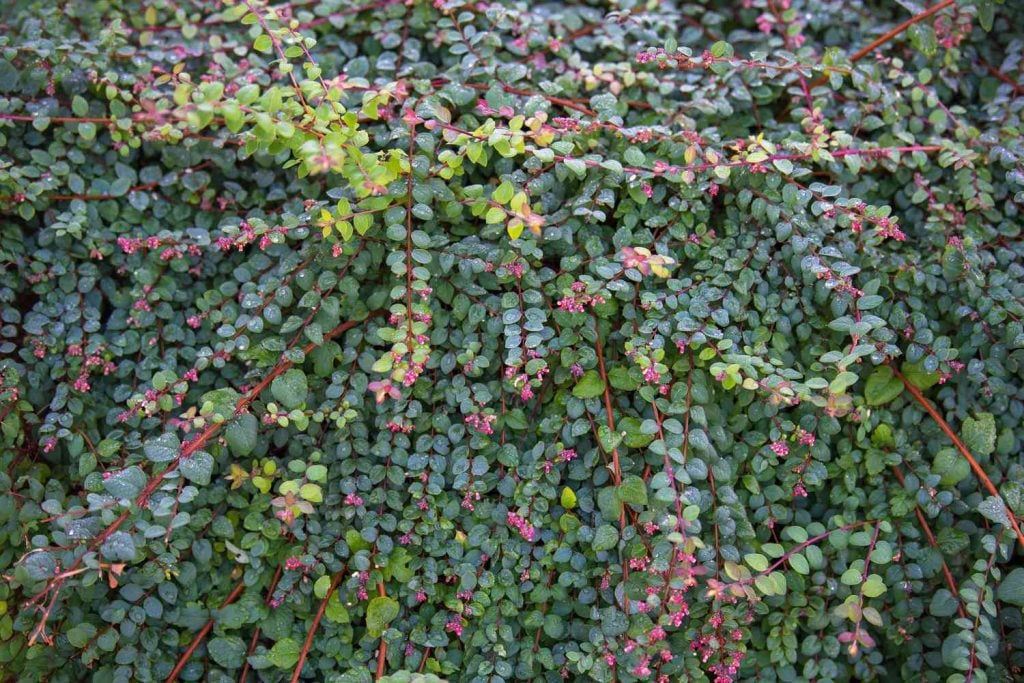
This plant is used for lower hedge heights. This plant creates attraction among people due to its pink berries, which appear from autumn to winter. This plant’s white or pink flowers attract the most pollinators in the summer.
The moist soil is the best for its plant, but it also grows well in clay or chalky soil. This plant grows in such a manner that it will look good without also needing pruning or trimming. The plant sustains well in full or partial sun. This is one of the more favourable plants for hedges.
Final Note
These are the top 20 fastest-growing hedges options in the UK if you are searching for any. They can enhance the look of your whole location. They protect your plants from pollution and provide complete privacy for your yard—research well before selecting any plant for a hedge.
Select the plant according to weather, soil condition, and sun position. Take those kinds of plants into consideration that can fulfill your requirements, and make sure to fulfill them from your side.
After installing them, provide them with proper care, maintenance, and nourishment. Then, with little effort and time, you can enjoy a thriving hedge for your landscape in no time.

